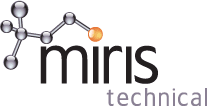Case Study #3
Client
The client is a World-Class manufacturer of inorganic pigments and associated products.
Client Requirement
The client had just recently installed a new plant but which was struggling to achieve nameplate capacity.
The Challenge
The newly-installed plant was a copy of another site owned by the client. That facility had been successfully operated since the late 1890’s and the current plant had come to the end of its life. The client wished to relocate the new plant closer to the raw materials supply and to modernise some of the Unit Operations.
The plant previously been run by degree-qualified shift chemists but the client wished to train some a new workforce, mainly fitters and labourers and to re-deploy the chemists.
The gases emitted were recovered by absorption to recycle one of the reagents in dilute form. Losses of reagent required replacement with fresh concentrated material.
A sophisticated analyser monitored emissions and if too high, resulted in operators shutting the plant down to prevent the Environment Agency Terms of Consent limits from being exceeded. The process was effectively a back-titration that required a smooth flow of gas in Absorption Towers to allow a consistent plant throughput.
The solid reagent used in the reaction was variable due to bridging in the Feed Hoppers.
Project
In the early stages of the project, several modifications and improvements were implemented to increase throughput. These included an improved gas distribution manifold in the final Scrubbing Tower to prevent fluctuations in gas flow, a low-friction liner to the solids’ Feed Hoppers that dramatically prevented bridging and greatly decreased feed fluctuations. A new fan for each absorption stream made gas flow less prone to pressure drop changes. The net result of these changes was constant gas flowrates.
Perhaps the most dynamic change to the process was the introduction of real-time data historian software and the new training for plant operators. The software enabled operators to more accurately judge the level of emissions than they could with the plant DCS. They a thorough understanding of plant chemistry and were therefore able to develop an appreciation of the requirements for smooth plant operation. The plant modulated rather than shut down, enabling throughput to be further increased. Finally, they were able to perform plant Quality Assurance – sampling, titration and chemical analysis that was better and more accurate than the qualified shift chemists.
Client Benefits
Initial modifications increased the plant output by over 40% to nearly 80% nameplate capacity within the first two months.
The training and software implementation helped increase throughput to over 100% nameplate capacity. The last percentage increases were by far the more difficult to achieve. Perhaps most importantly, training massively increased the morale, knowledge and ability of the operating team and they also increased customer satisfaction levels enormously, as the product being sent to customers was nearly always in specification.
Plant emissions never exceeded EA TOC’s once the operators had been trained and they developed the knowledge of the plant that exceeded nearly everyone in the technical team. Their performance was exemplary.
